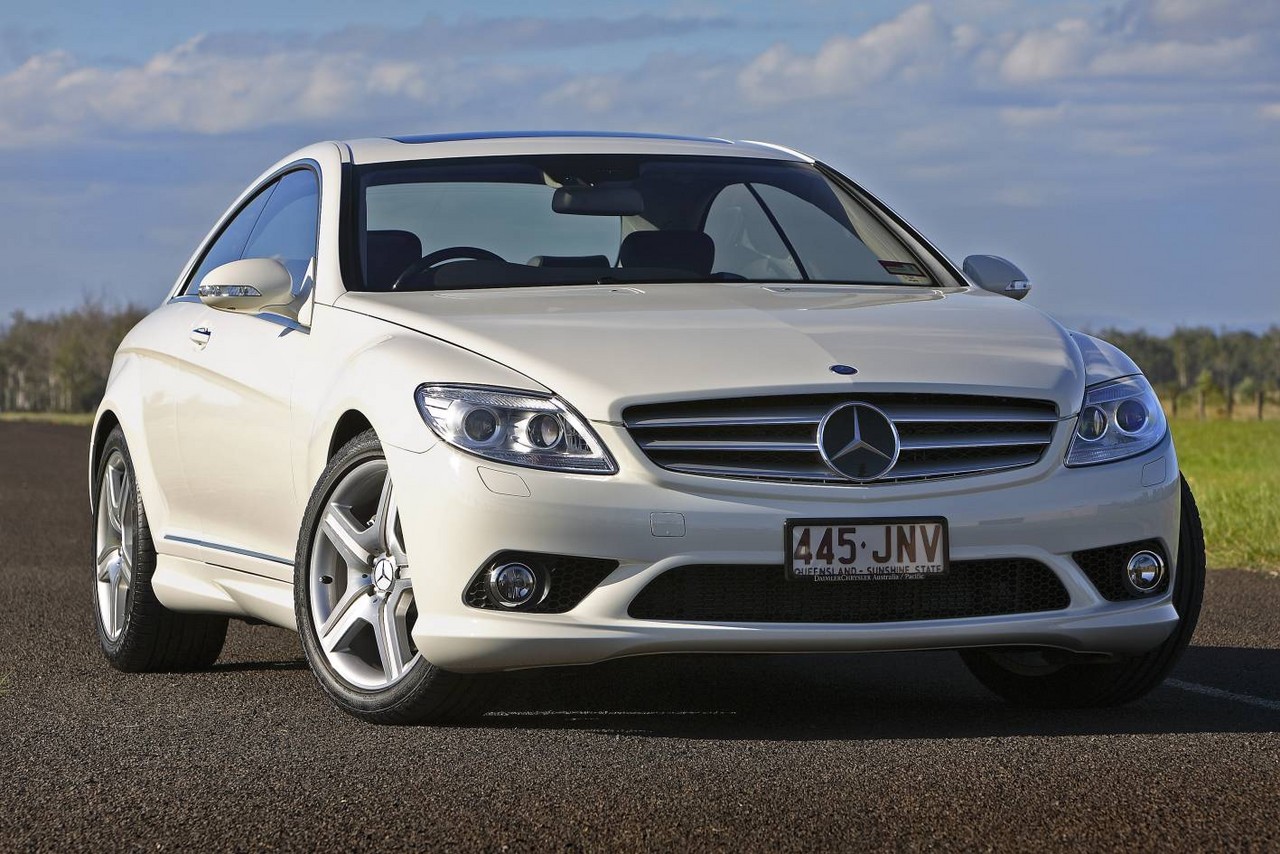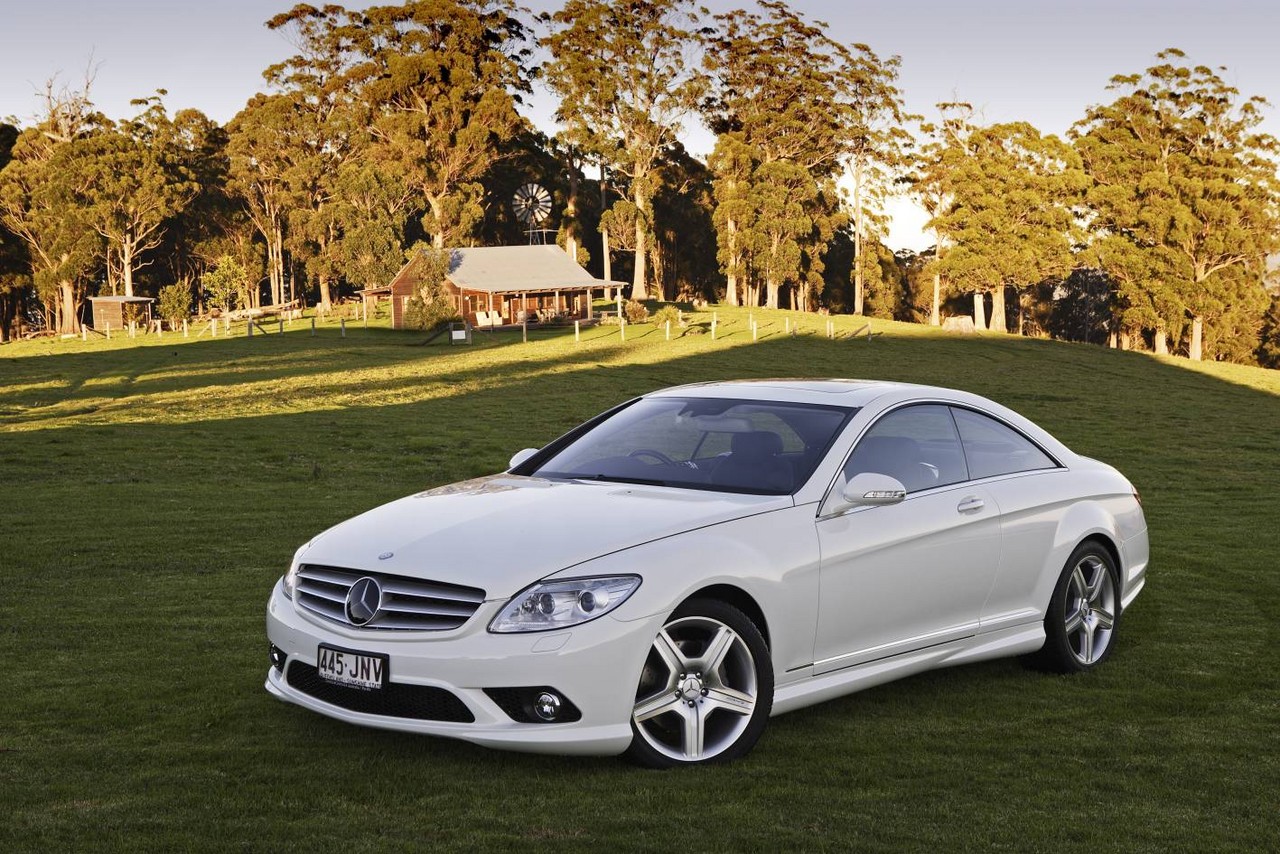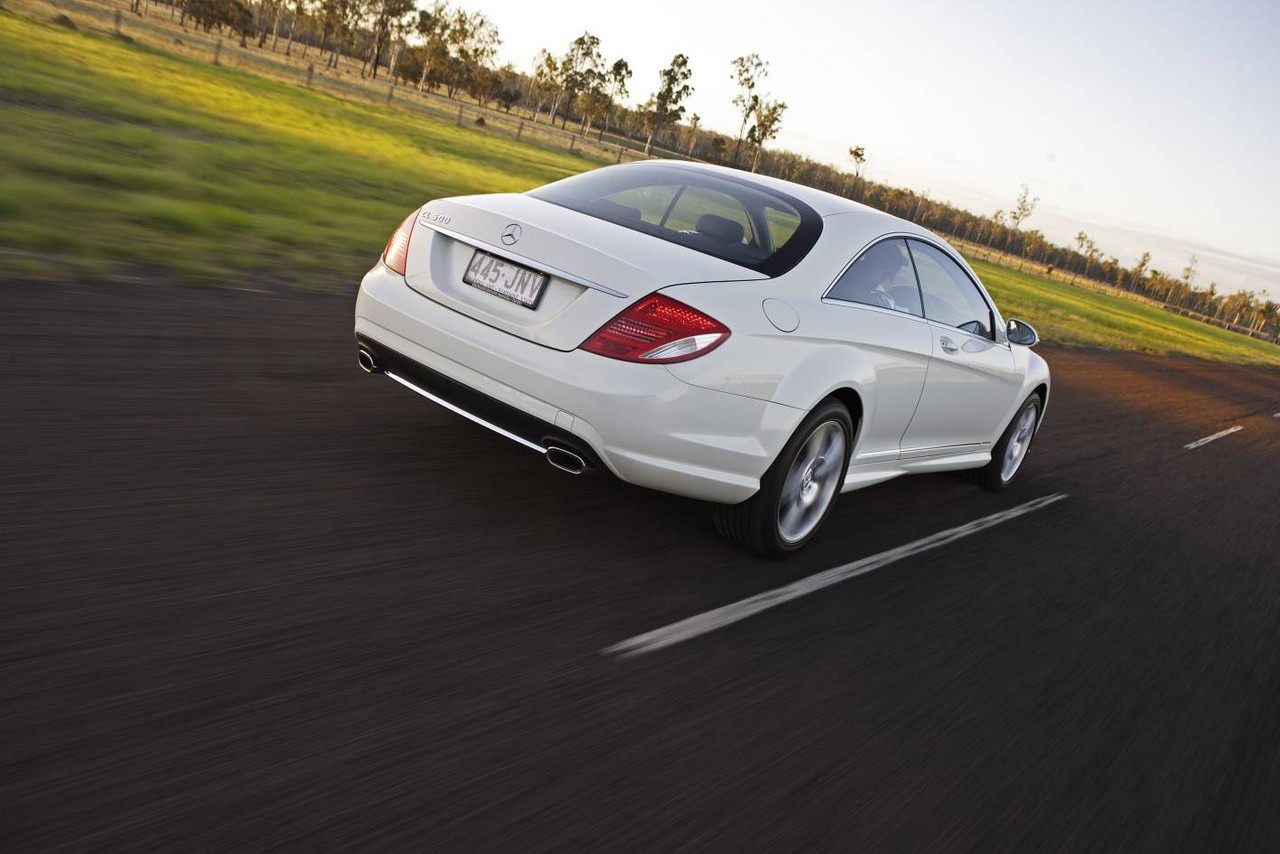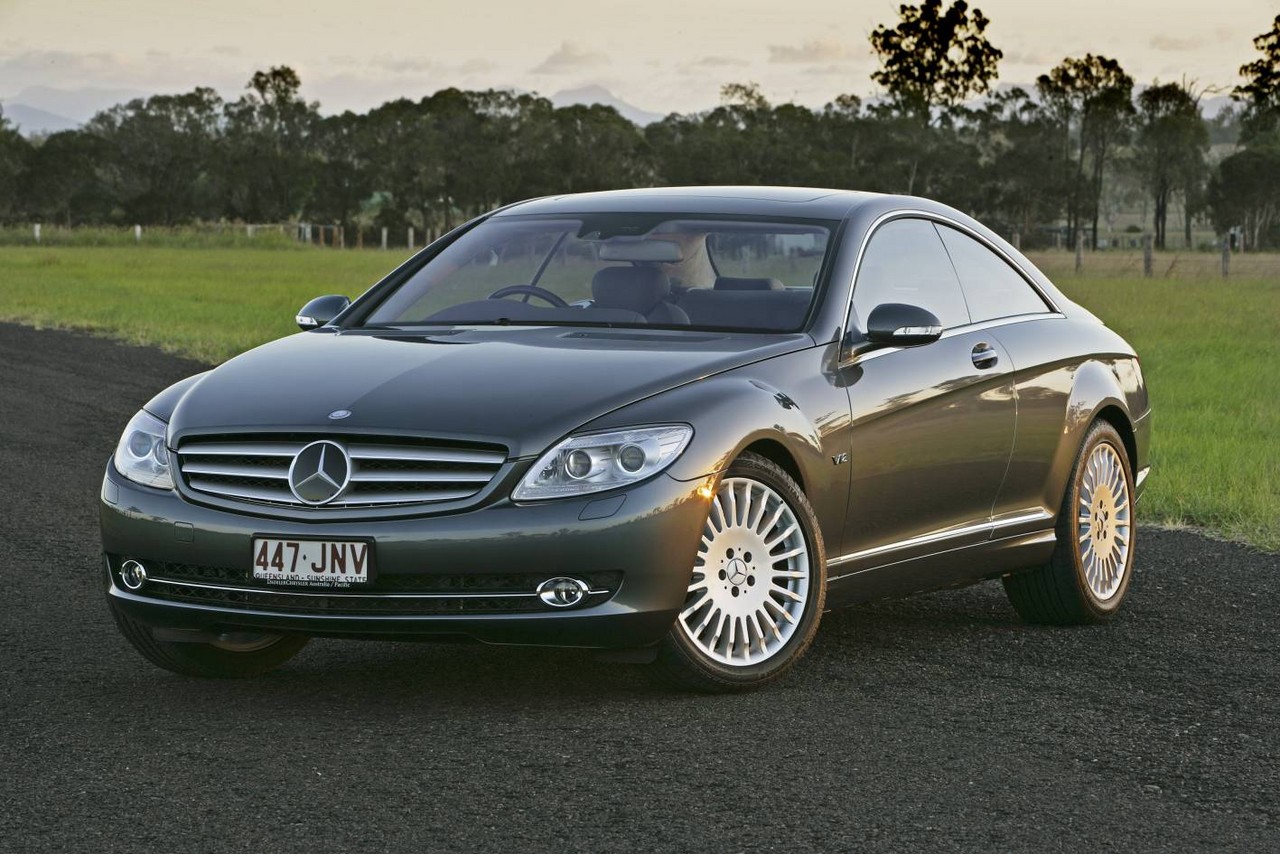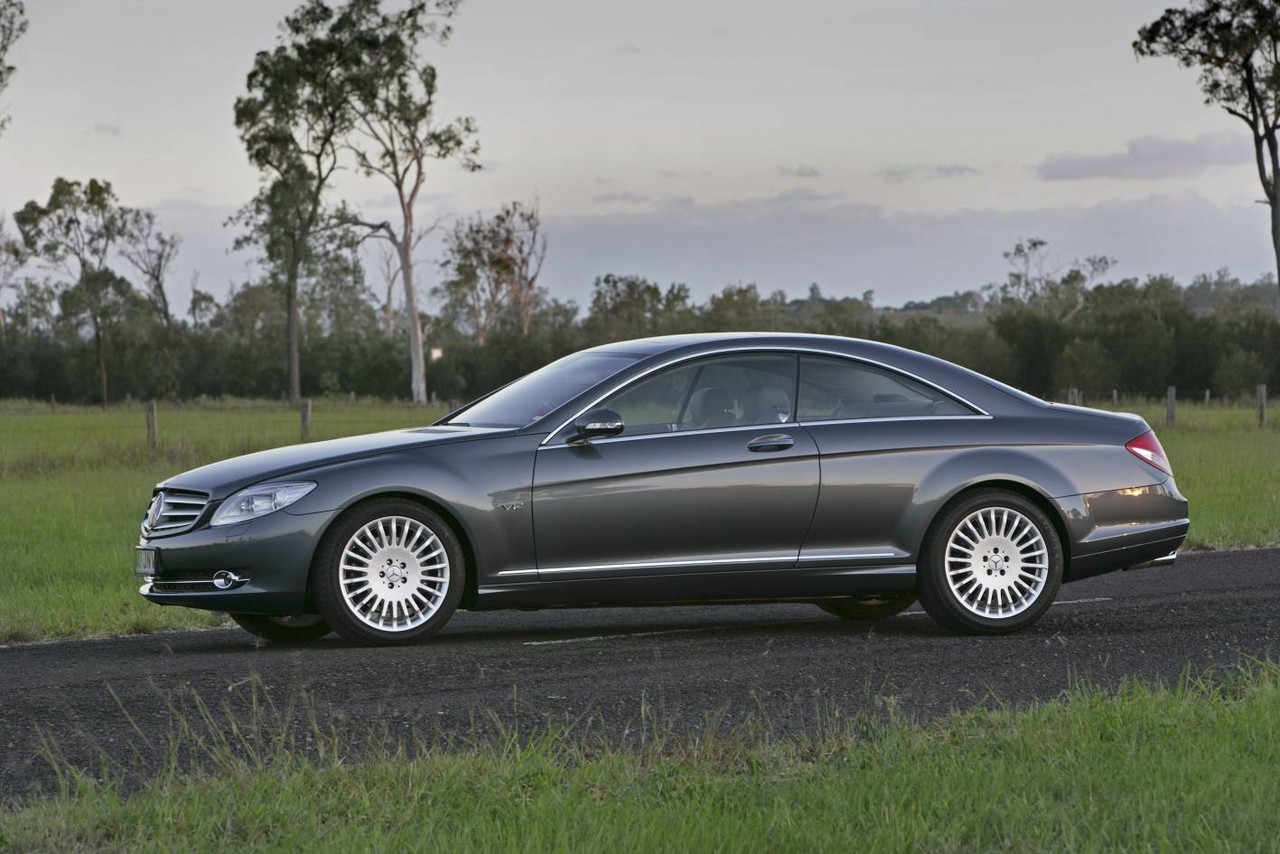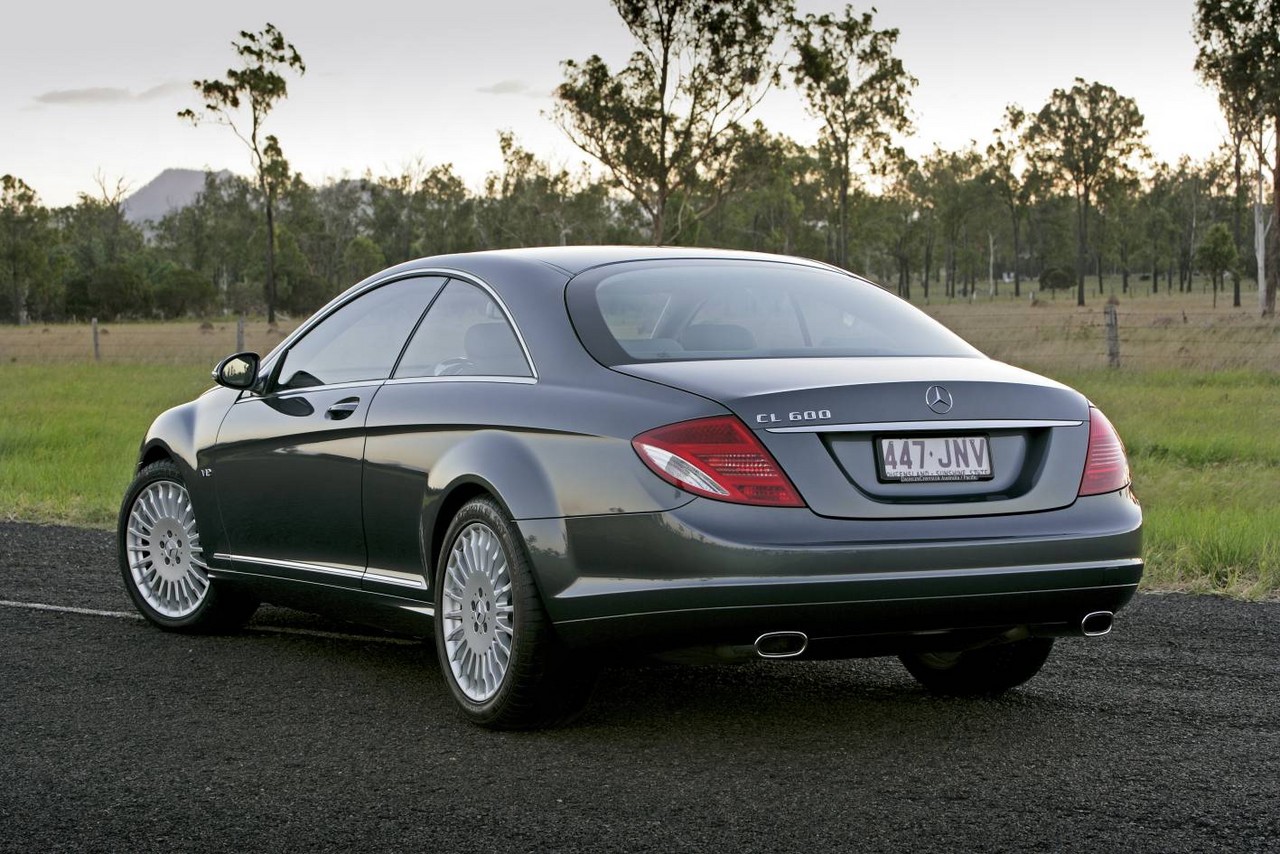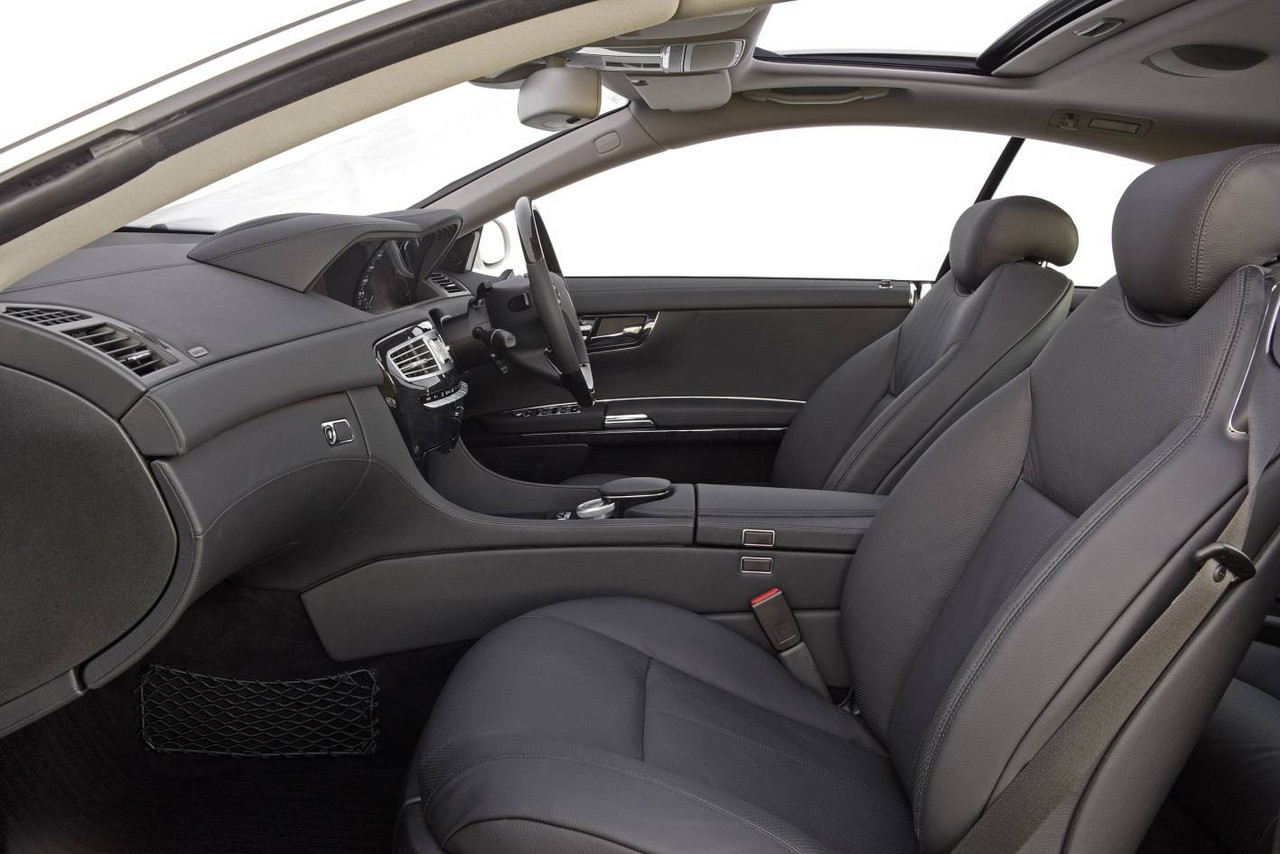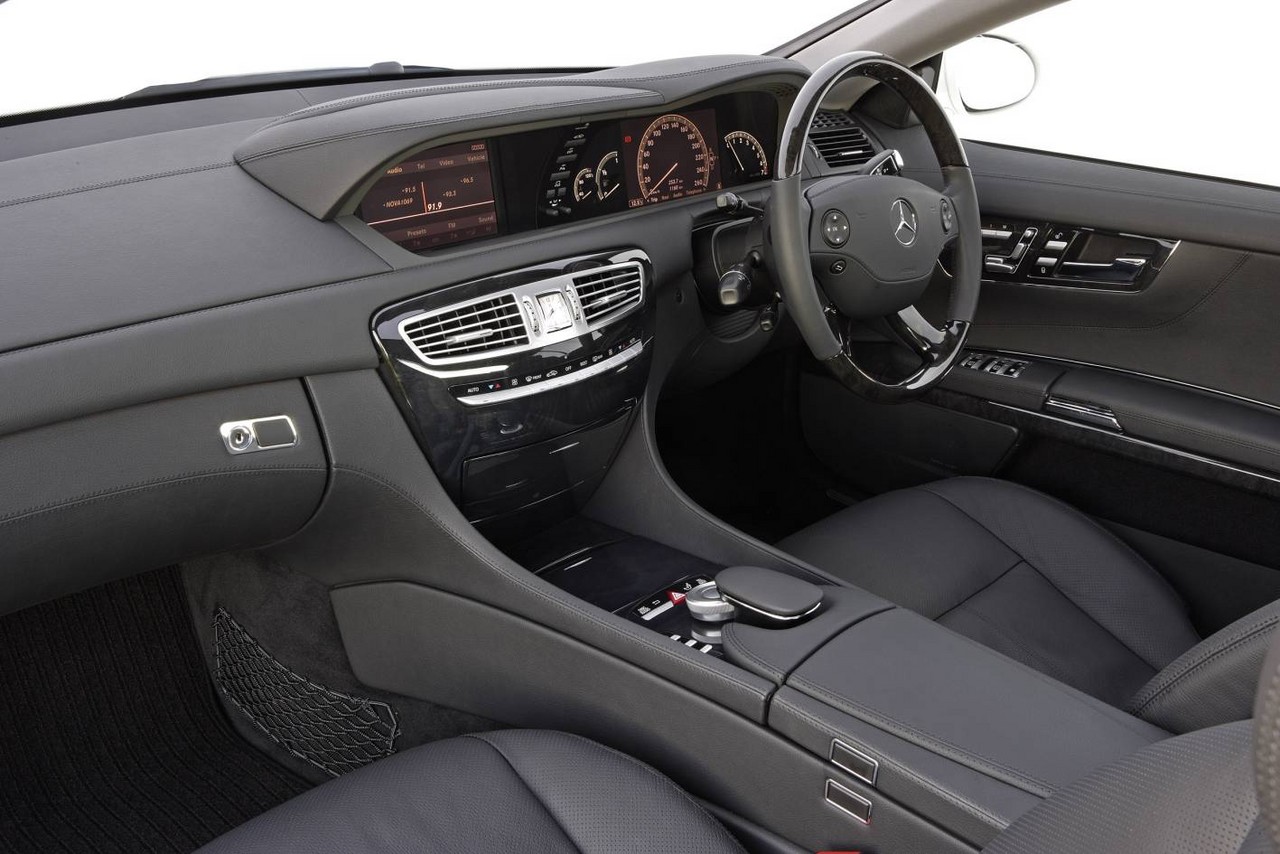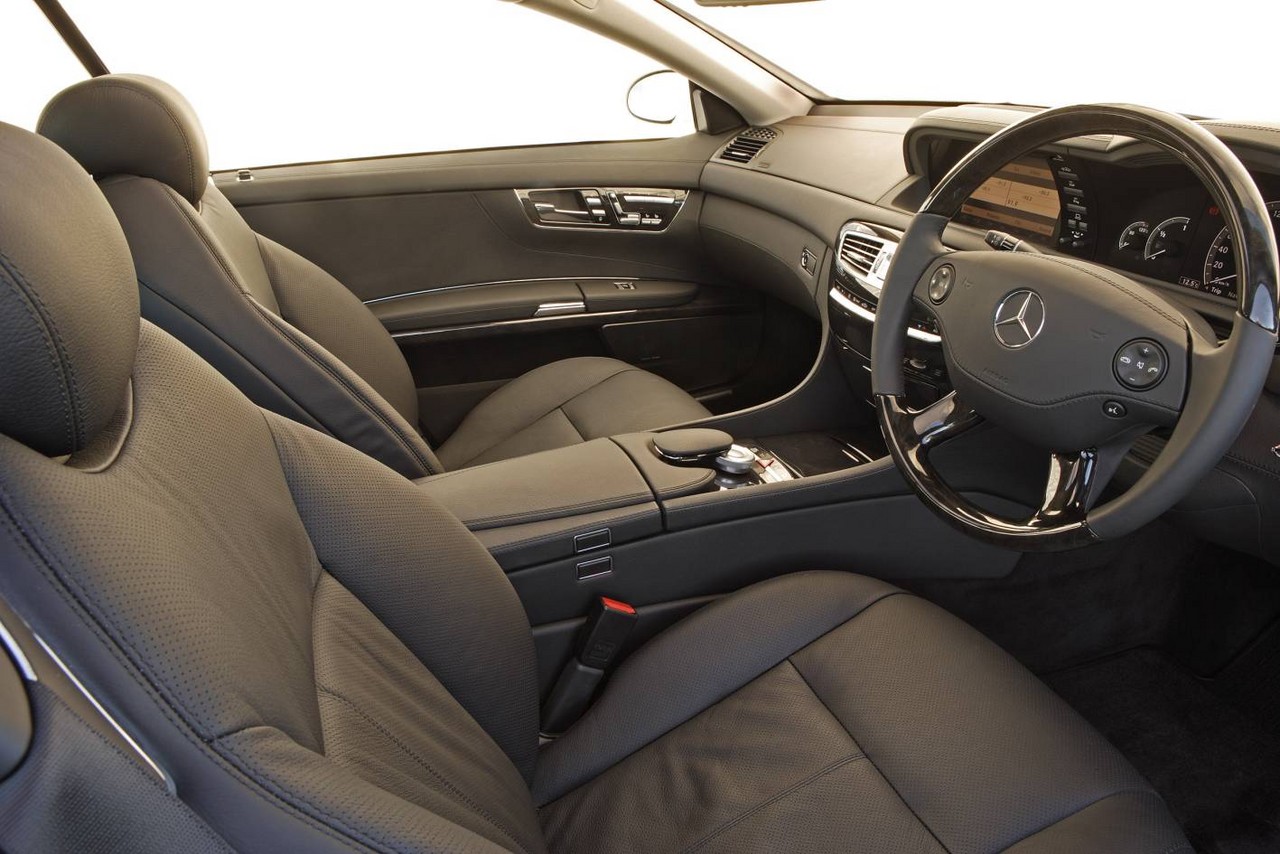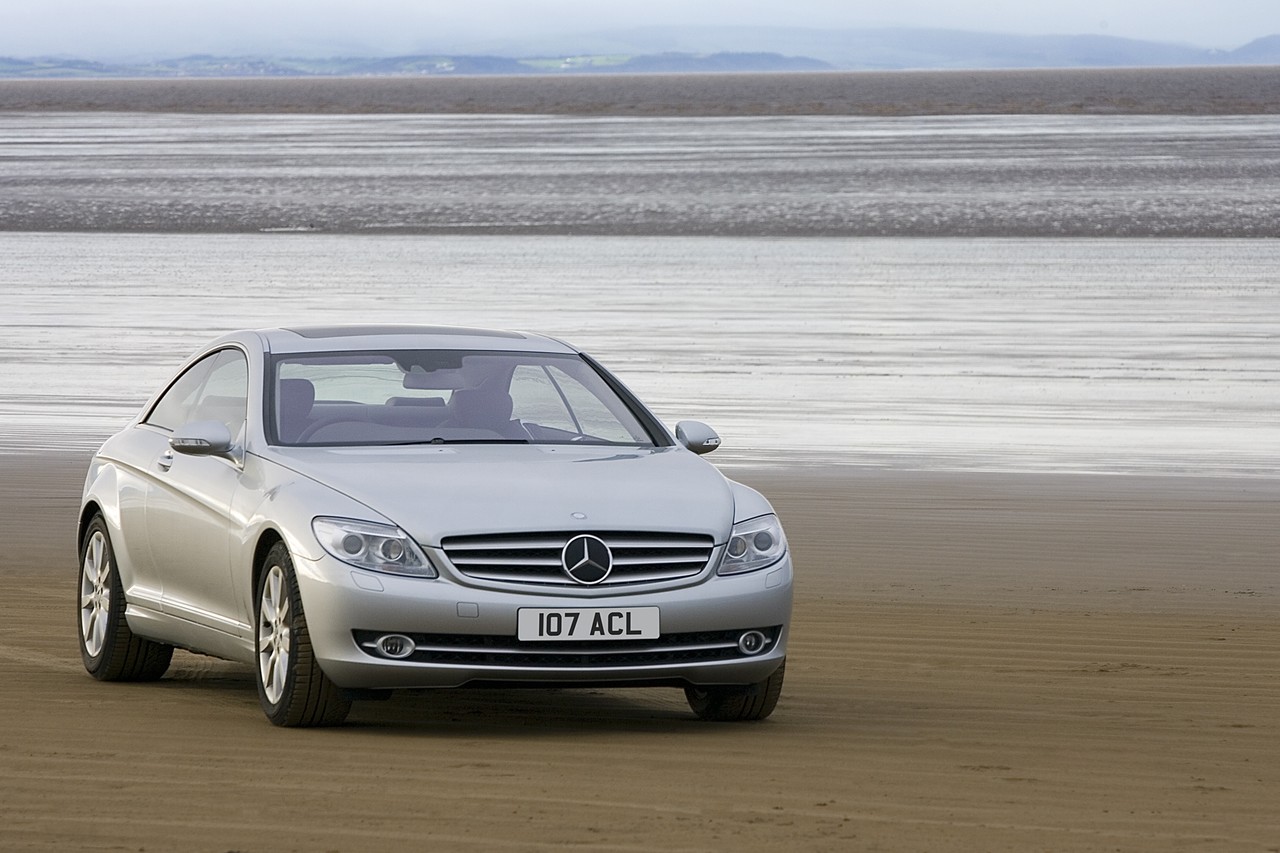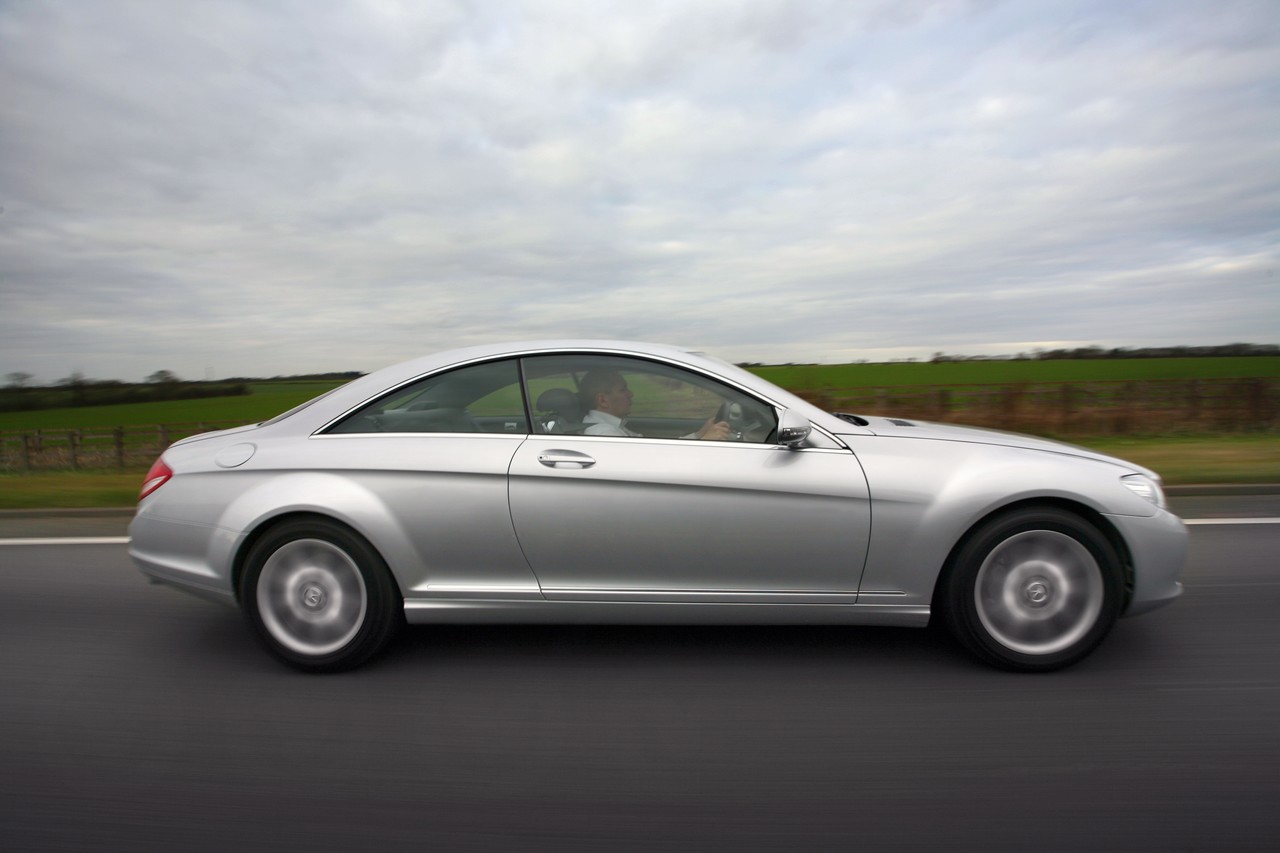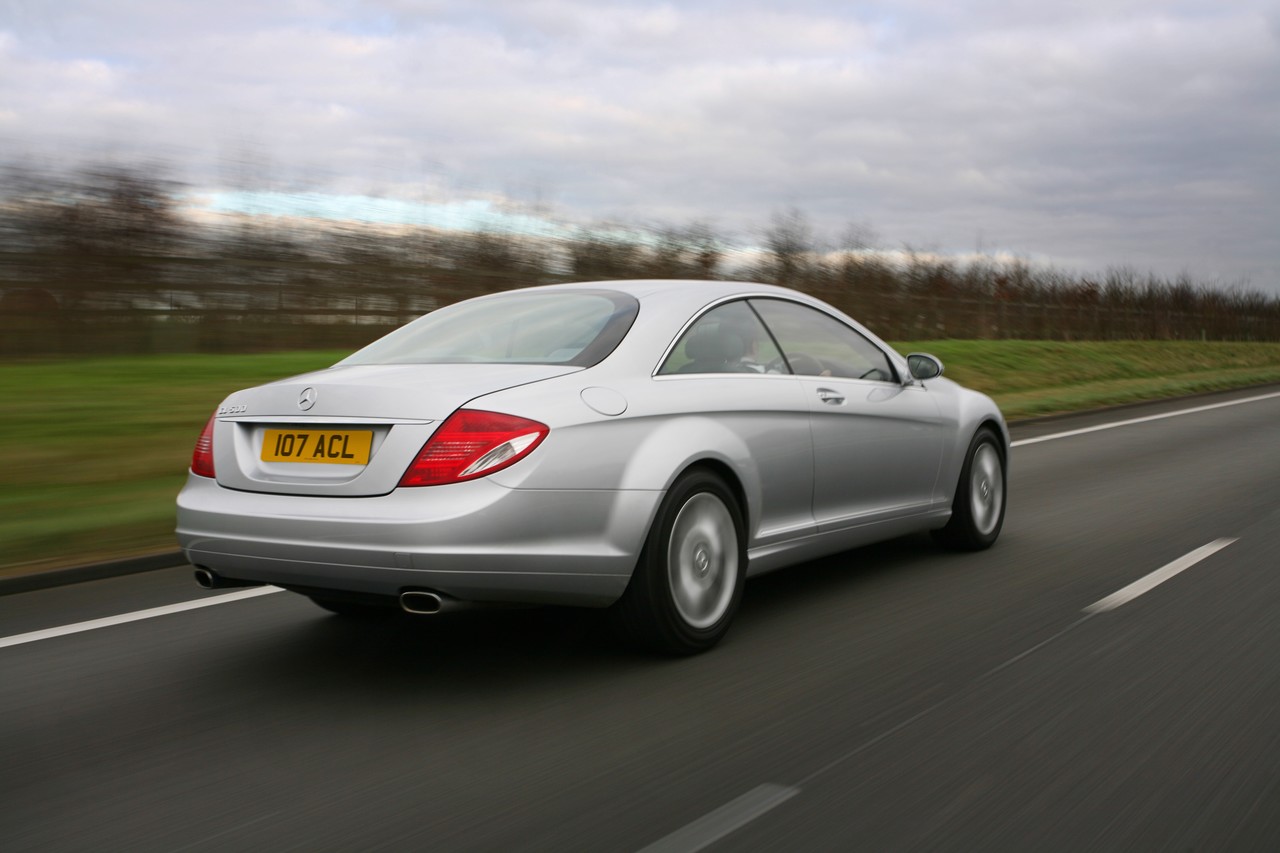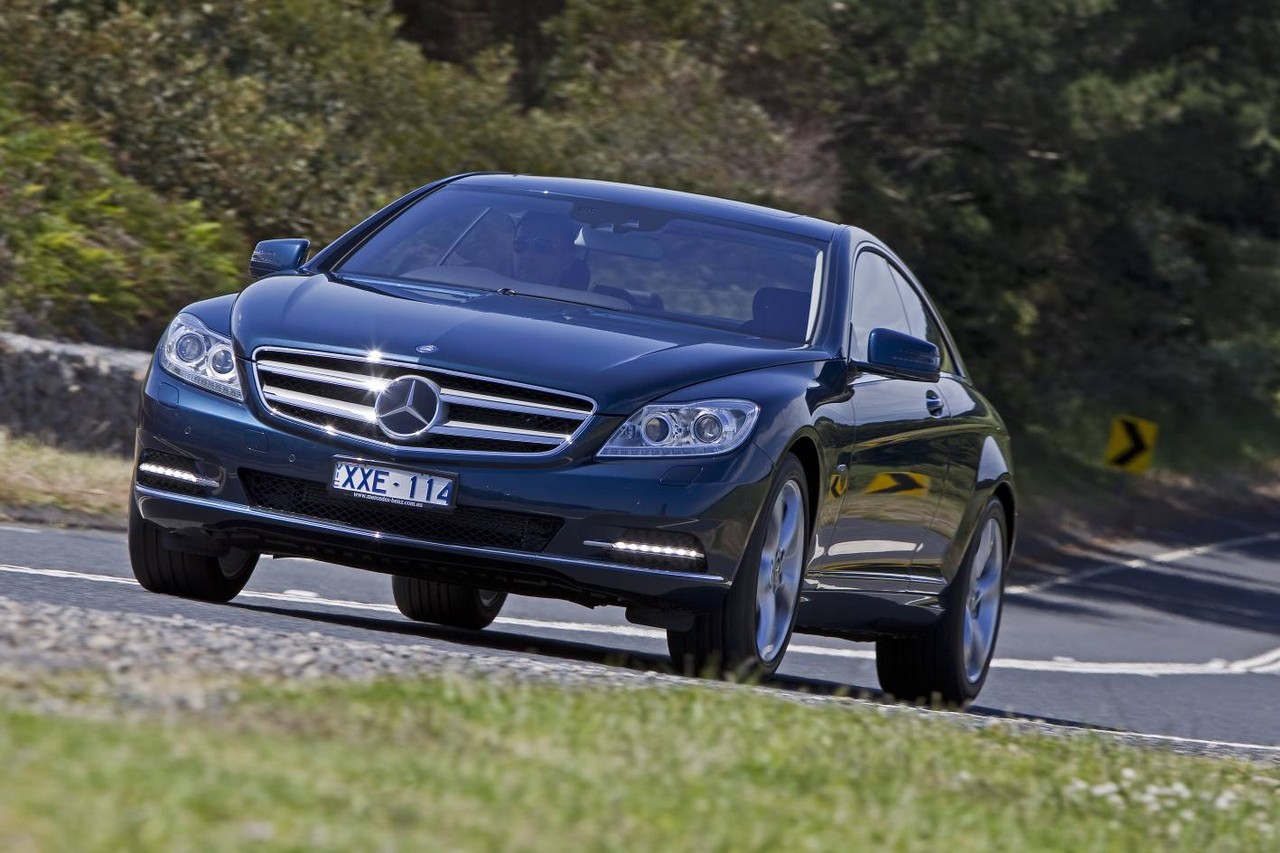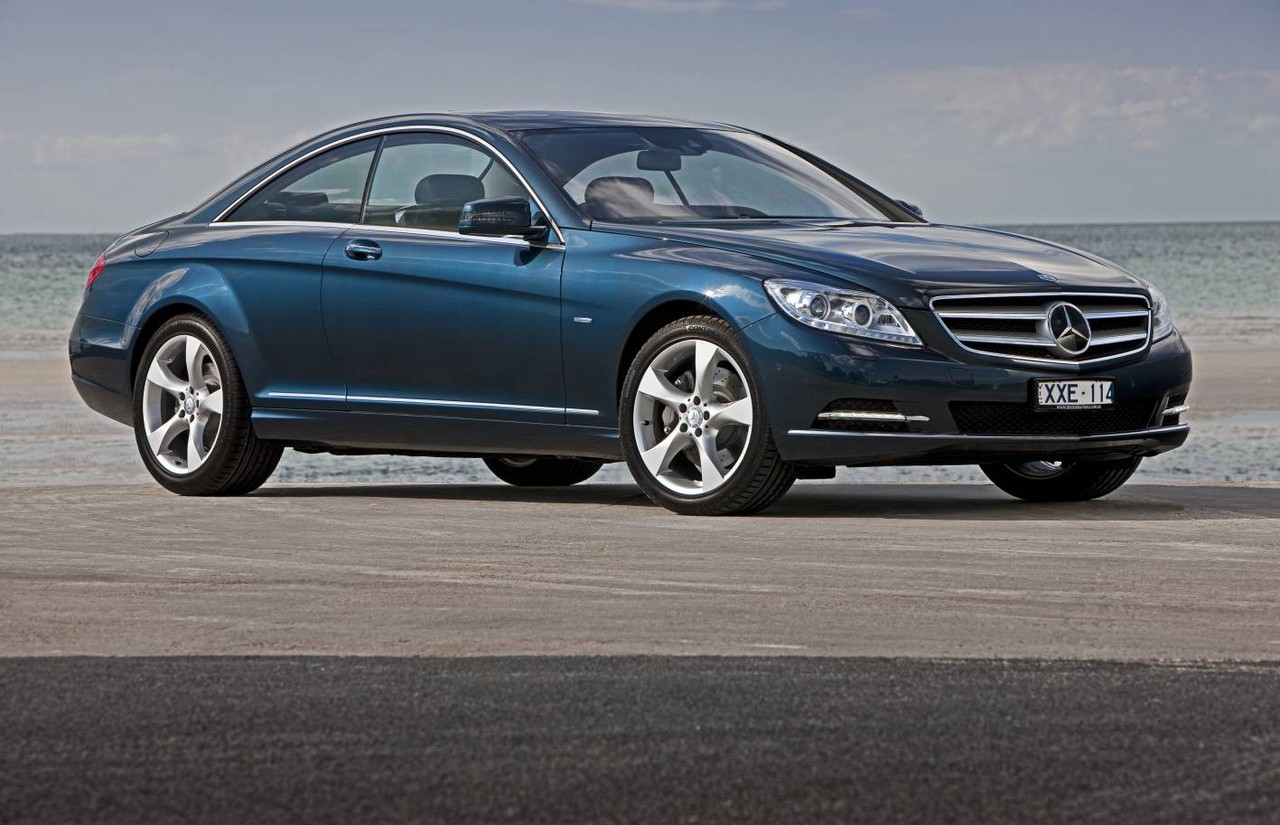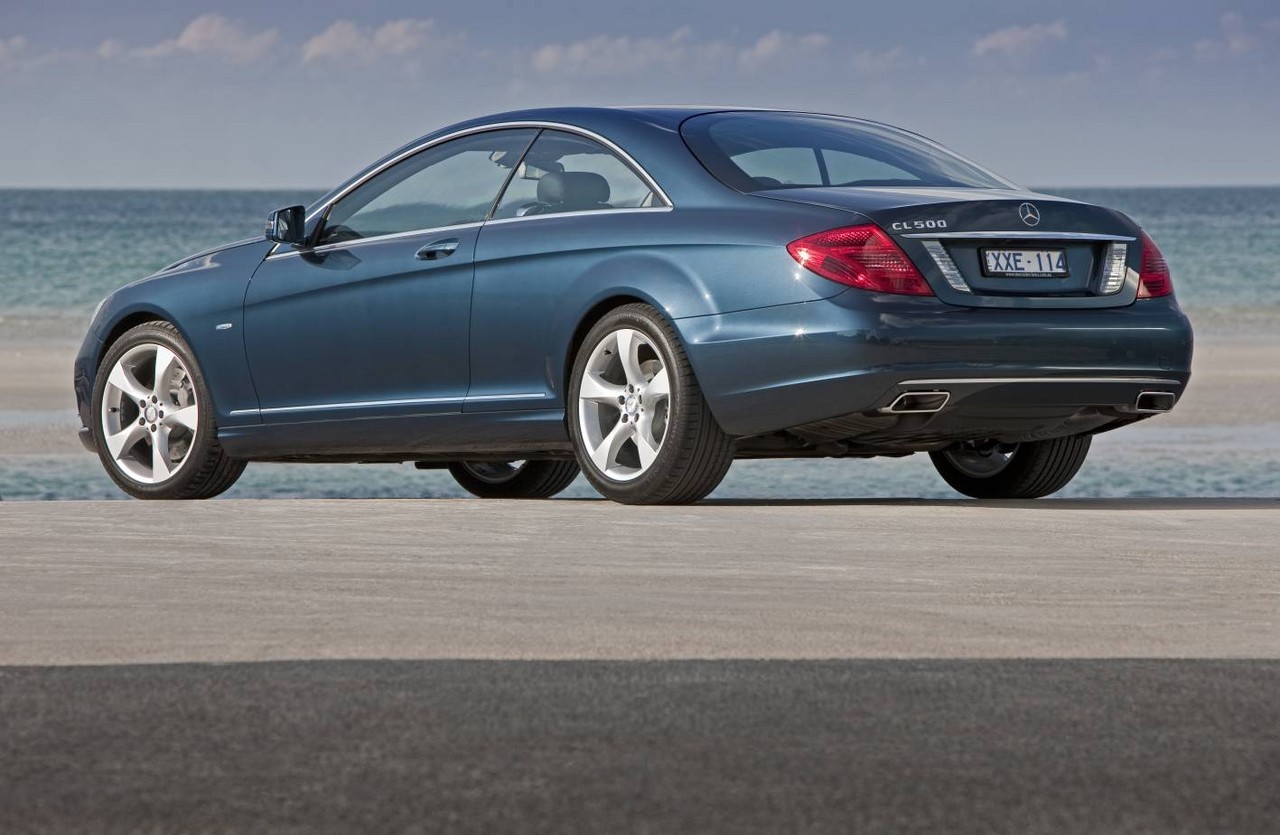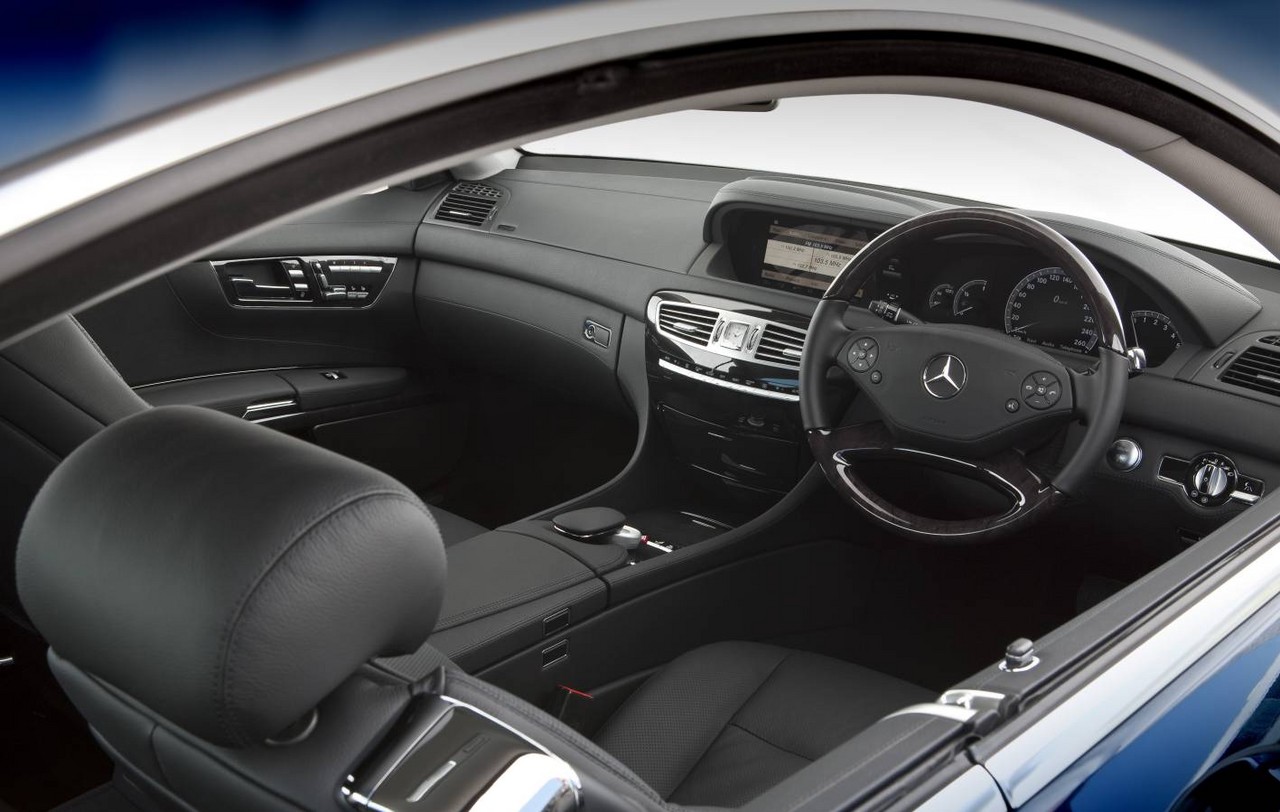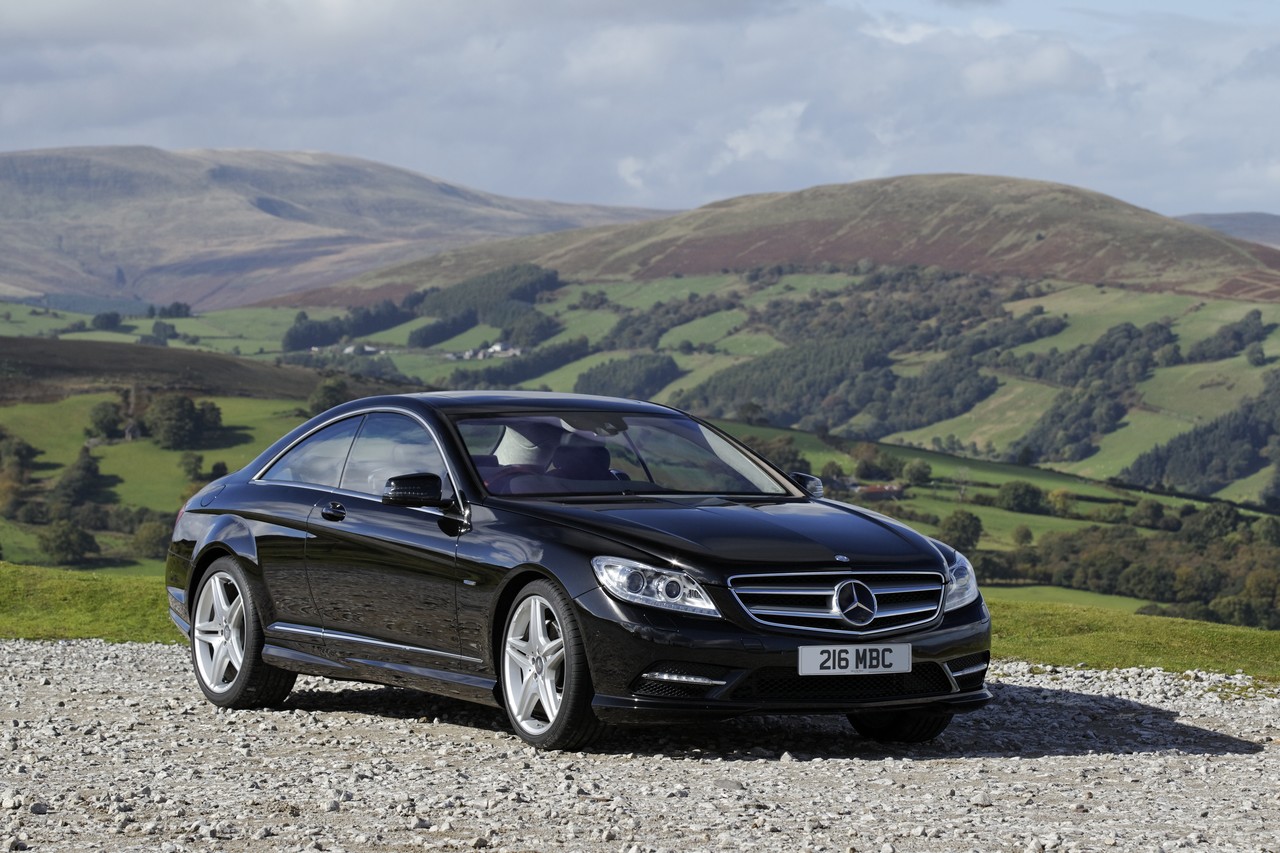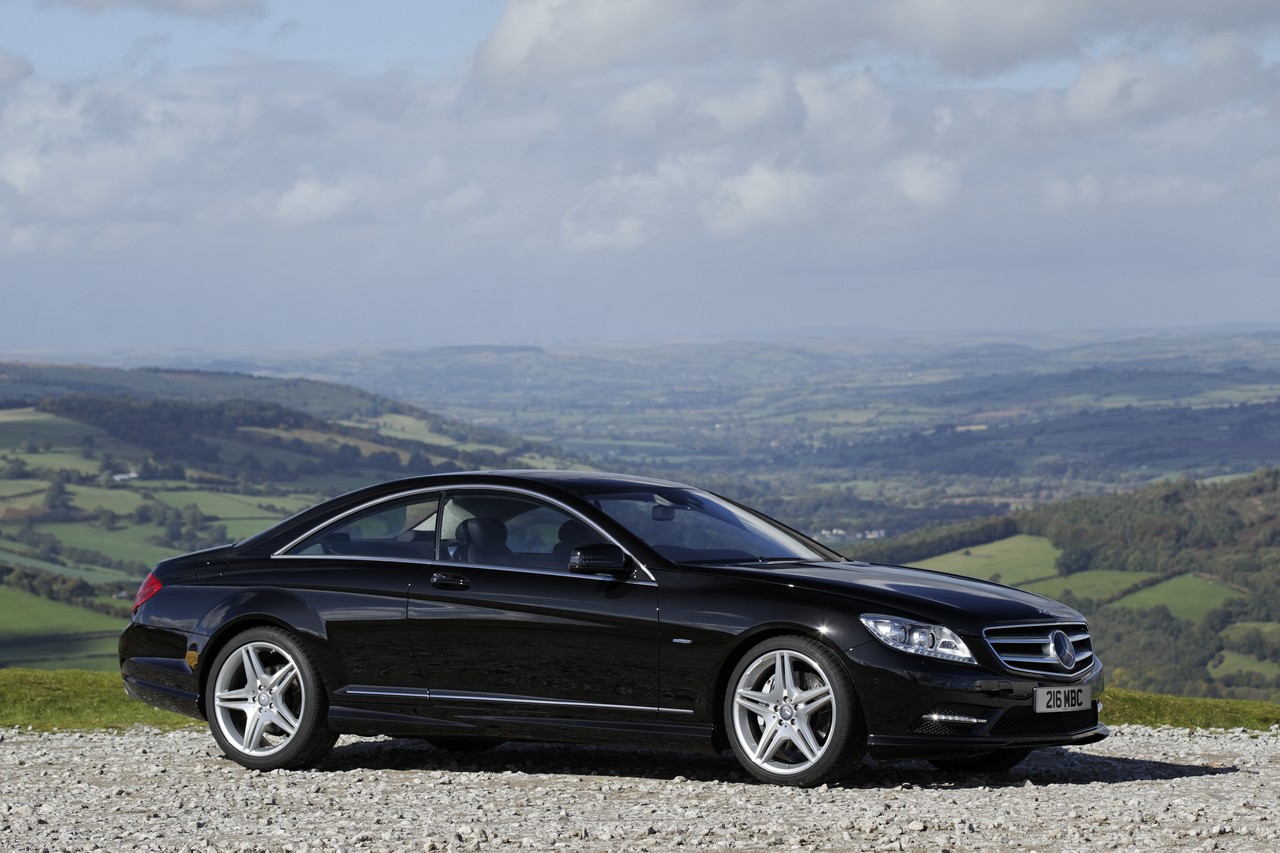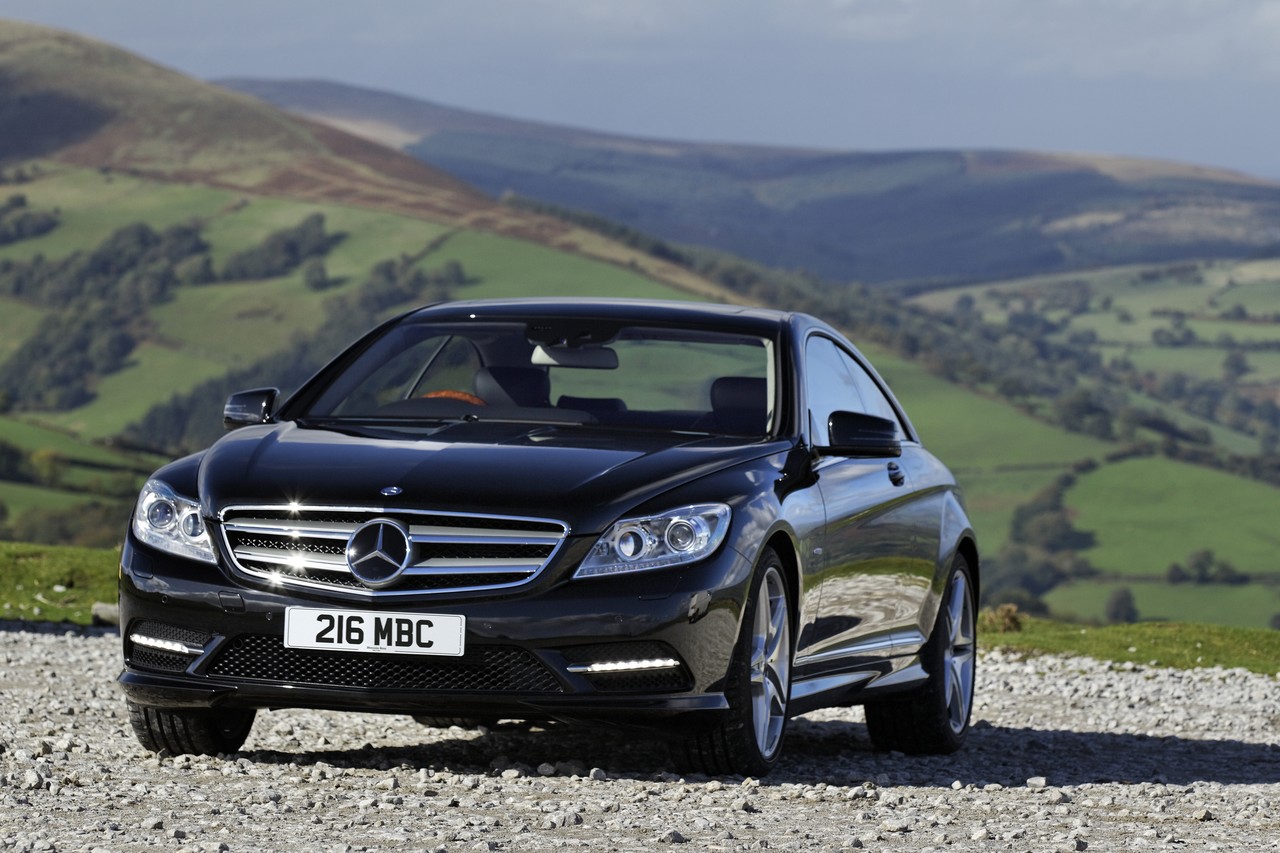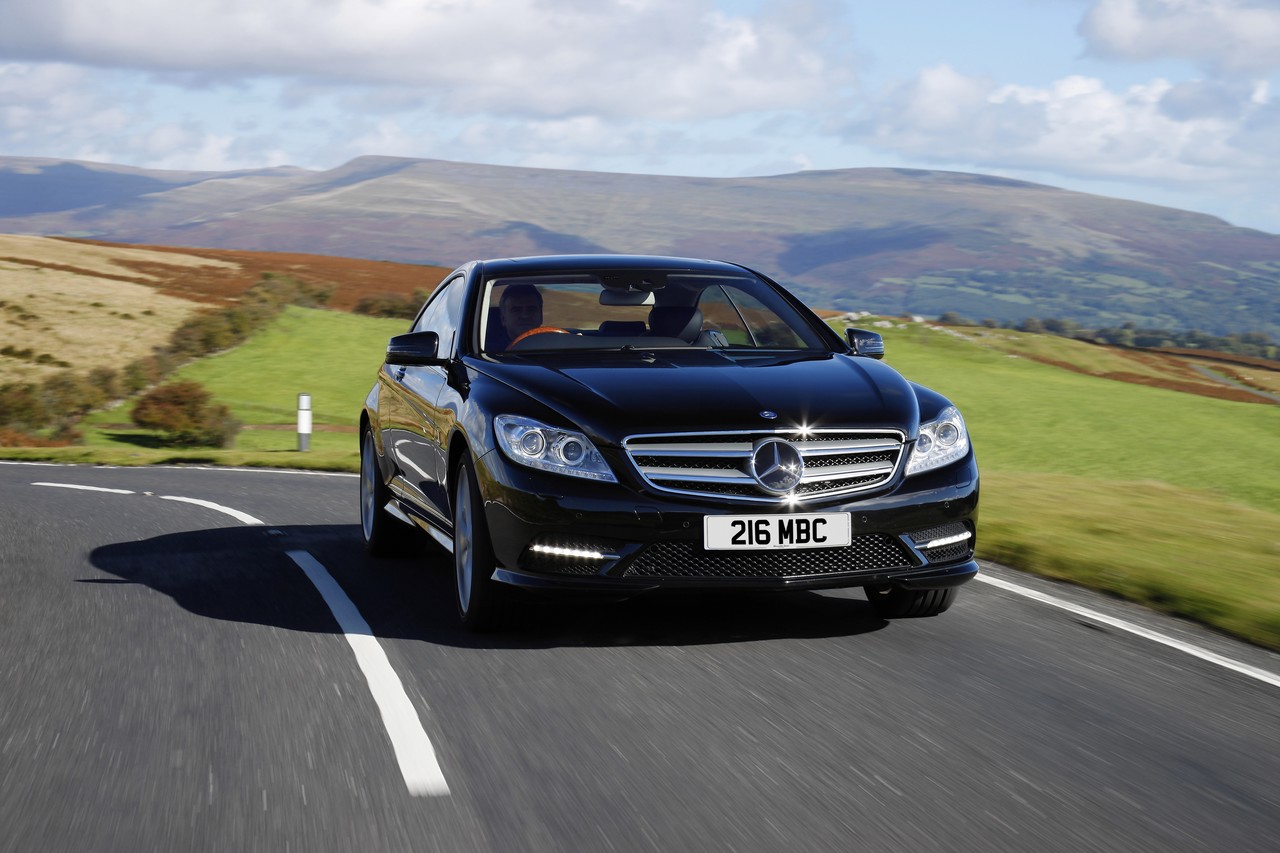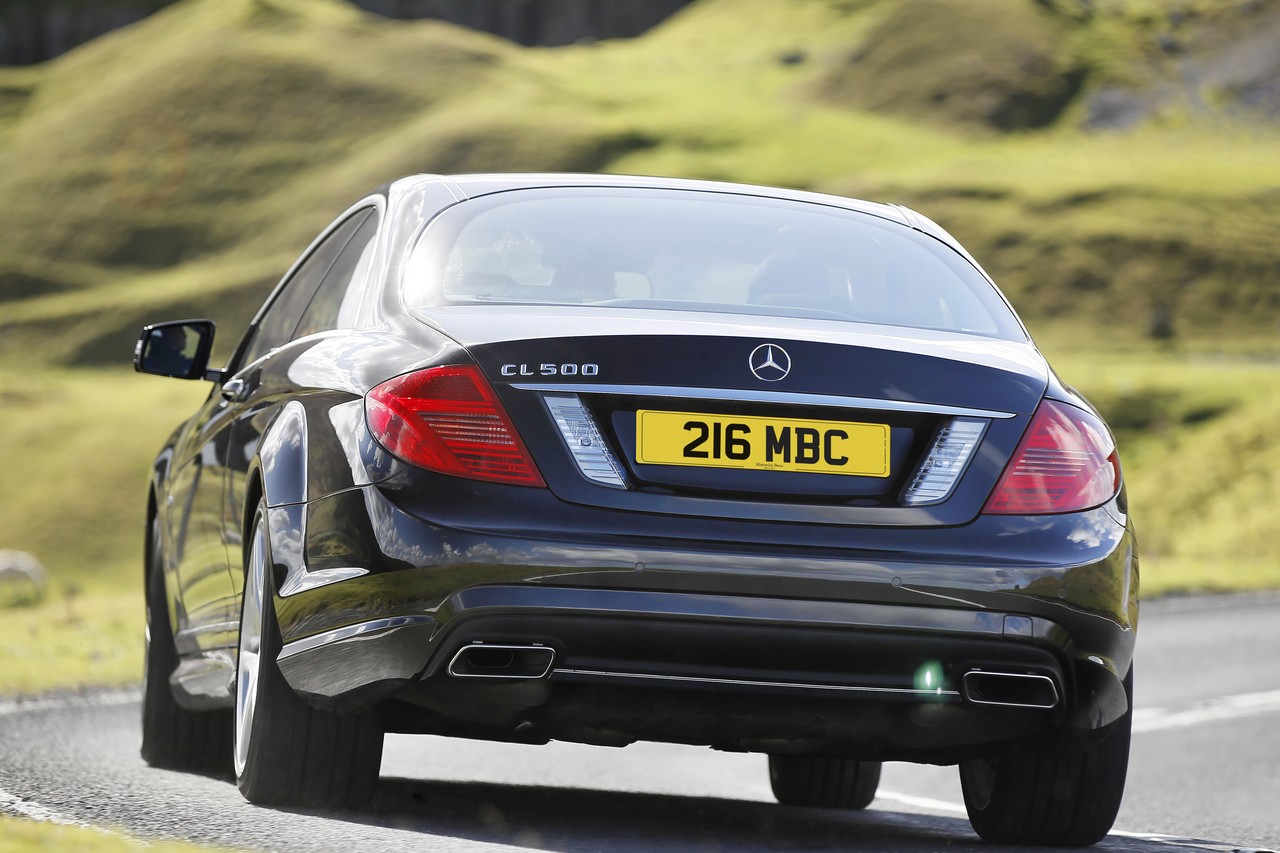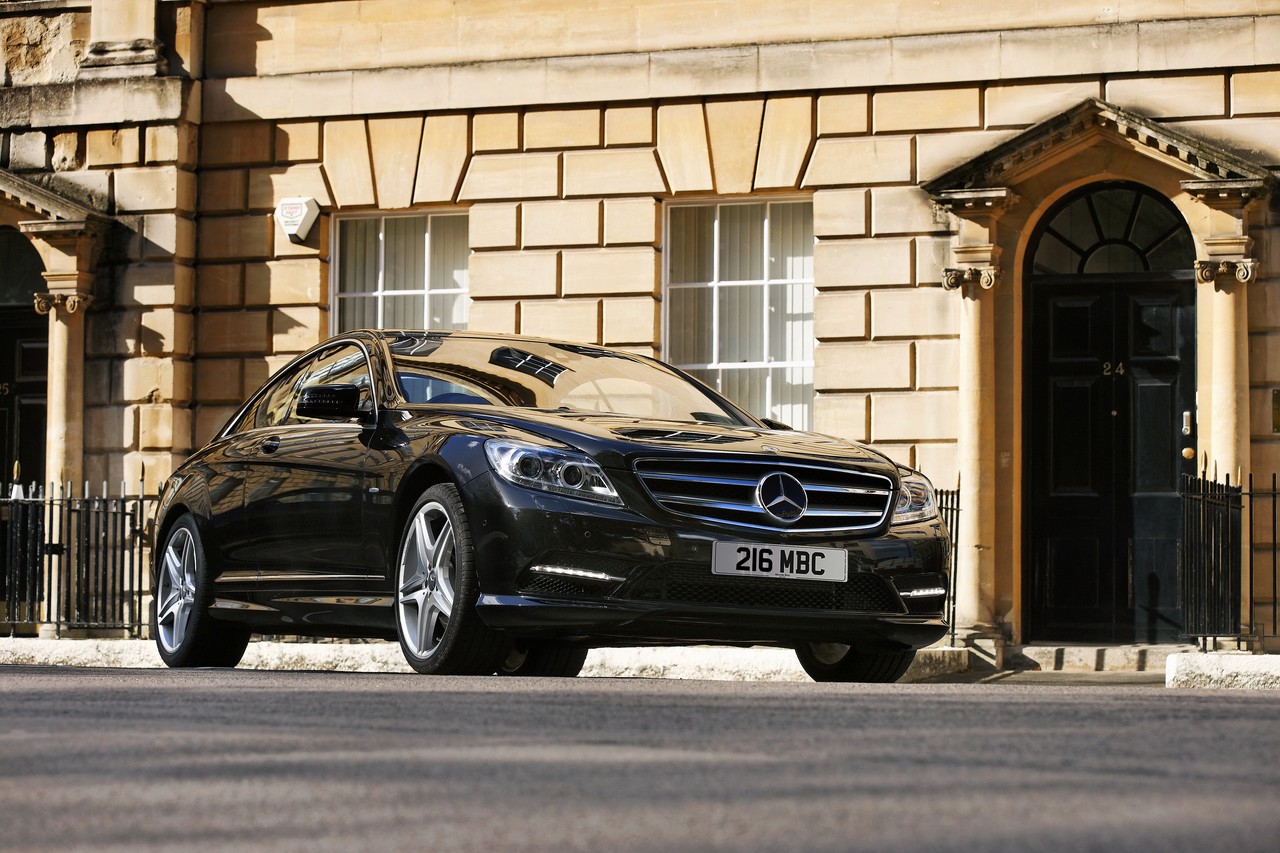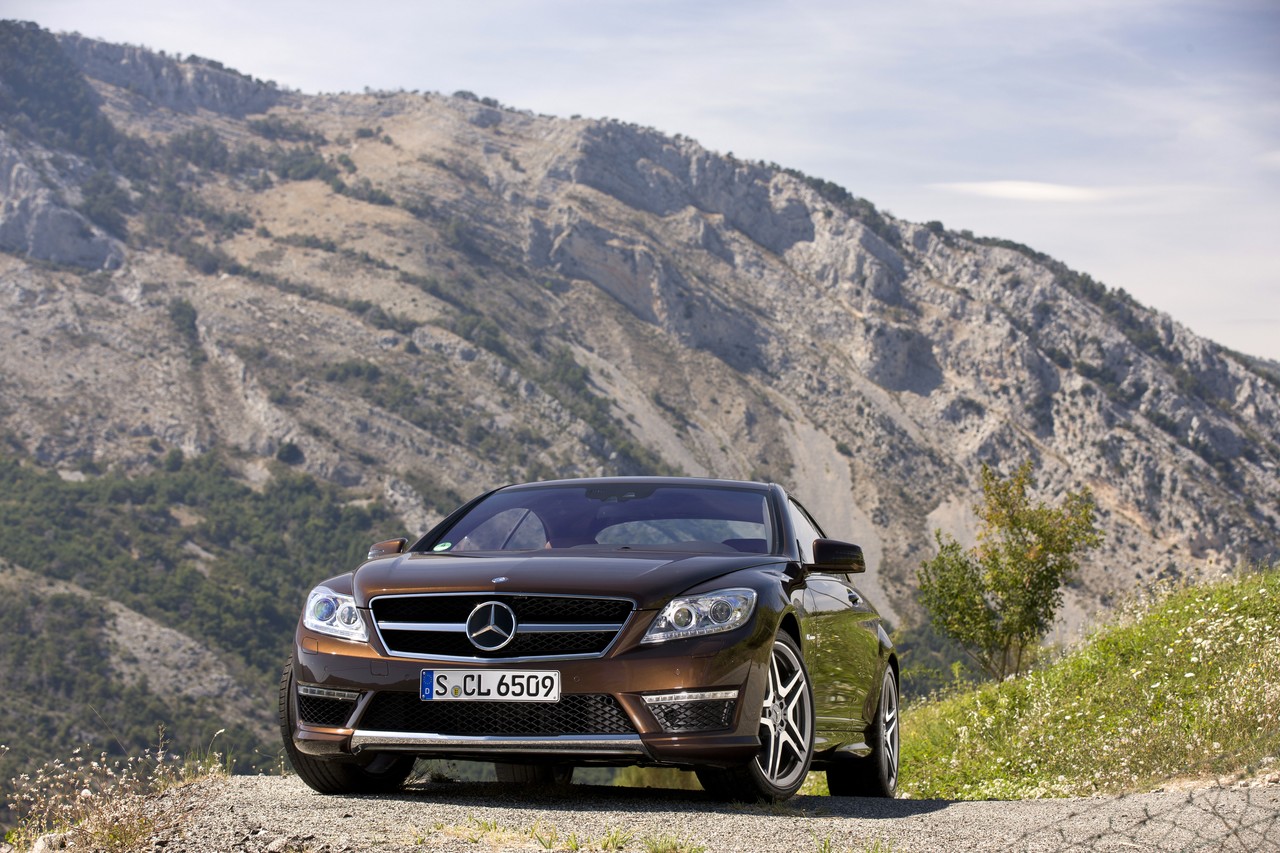
- Responsive powertrains
- Comfortable ride
- Composed dynamics
- High standard of fit and finish
- Quiet, well-insulated cabin
- CL 500 could use more powerful brakes
- Vague steering
- High running, maintenance and depreciation costs
Review: Mercedes-Benz C216.I CL-Class (2007-10)
Overview
Released in March 2007, the Mercedes-Benz C216 Series I (C216.I) CL-Class was a large, luxury coupe. Manufactured in Sindelfingen, Germany, the rear-wheel drive C216 CL-Class range consisted of the CL 500 and CL 600. Please note that the Mercedes C216 CL 63 and CL 63 AMG have been reviewed separately.
| Years | Engine | Trans. | Peak power | Peak torque | |
|---|---|---|---|---|---|
| CL 500 | 2007-10 | 5.5-litre petrol V8 (M273) | 7sp auto | 285 kW at 6000 rpm | 530 Nm at 2800-4800 rpm |
| CL 600 | 2007-10 | 5.5-litre bi-turbo petrol V12 (M275) | 5sp auto | 380 kW at 5000 rpm | 830 Nm at 1900-3500 rpm |
Dimensions and suspension
Compared to the C215 CL-Class , the C216 CL-Class was 72 mm longer (at 5065 mm), 14 mm wider (1871 mm), 20 mm taller (1418 mm) and had a 70 mm longer wheelbase (2955 mm).
Like the W221 S-Class on which it was based, the C216 CL-Class had four-link front suspension and multi-link rear suspension. Furthermore, all C216 CL-Class models were also fitted with Mercedes-Benz’s ‘Active Body Control’ suspension system which utilised hydraulic servo cylinders in the suspension struts, sensors and microprocessors to provide an adaptive suspension system which minimised pitch and body roll.
Safety equipment
Standard safety equipment for the C216 CL-Class dual front airbags, front and rear side airbags, full-length curtain airbags, ABS, electronic brake force distribution, brake assist, electronic stability control, traction control, active front seat head restraints, and front and outer rear seatbelts with pre-tensioners and load limiters.
The CL-Class was also fitted with Mercedes-Benz’ s ‘Brake Assist Plus’ which used a 24 GHz radar sensor with a range of 30 metres and a 77 GHz radar sensor with a range of 150 metres to monitor the distance to the vehicle ahead and would warn the driver if there was a risk of a collision. Brake Assist Plus could detect vehicles when travelling at speeds up to 200 km/h, and stationary objects when the driver was travelling at 7 km/h to 72 km/h. Significantly, Brake Assist Plus could calculate the necessary brake force assistance to prevent a rear-end collision, build up that pressure in the braking system and provide it as soon as the brake pedal was depressed for ‘the best possible deceleration’.
Features: C216 CL 500
Standard features for the Mercedes-Benz C216 CL 500 included 18-inch nine-spoke alloy wheels, COMAND (Cockpit Management and Data System) with an eleven speaker Harman Kardon Logic7 sound system, a six disc CD/DVD player, MP3-compatibility, auxiliary inputs, hard-drive for music storage, satellite navigation, TV tuner and voice recognition, four-zone climate control air conditioning, leather upholstery, power adjustable front seats, heated and ventilated front seats, radar-based cruise control (Mercedes-Benz’ s ‘Distronic Plus’), front fog lights, directional bi-xenon headlights with washers, night view assist (with infra-red headlights), reversing camera, parking guidance system, rain-sensing wipers, automatic headlights, steering wheel gearshift buttons, Bluetooth connectivity, front and rear parking sensors, remote central locking, keyless go, power windows and heated mirrors, power retracting mirrors, a power adjustable steering column (height and reach), a power-operated park brake, power sunroof, ambient lighting, rear blind, 12 volt power outlet, memory settings (front seats, mirrors, steering column), tyre pressure monitoring, a trip computer, motion-sensing alarm and an immobiliser.
Features: C216 CL 600
Compared to the CL 500, the Mercedes-Benz CL 600 was further equipped with 19-inch multi-spoke alloy wheels, ‘Exclusive Passion’ leather upholstery, multi-contour front seats with massage function and active bolsters and a garage door opener.
August 2007 update
In August 2007, standard features for the COMAND APS were extended to a 3D map display for the navigation system and a triple auxiliary input socket in the glovebox (including video).
Brochures
- Brochure: Mercedes-Benz C216 CL-Class (International) (August 2007)
- Brochure: Mercedes-Benz C216 CL-Class (International) (September 2009)
Related links
Review: Mercedes-Benz C216.II CL-Class (2010-13)
Overview
Released in November 2010, the Mercedes-Benz C216 Series II (C216.II) CL-Class could be identified by its new bonnet and grille, headlights with LED running lights, larger Mercedes-Benz star and door mirrors, LED tail-lights and rear bumper with integrated exhaust pipes. Inside, there were higher quality materials, an upgraded entertainment system with a ‘Splitview’ display, a redesigned steering wheel and new ambient lighting shades.
Signficantly, the C216.II CL 500 was powered by Mercedes-Benz’s 4.7-litre twin-turbo M278 V8 petrol engine . To further improve fuel efficiency, the CL 500 was fitted with low rolling resistance tyres, an on-demand alternator, electric fuel pump and an electric pump for the hydraulic steering assistance.
Furthermore, the Active Body Control system was upgraded to reduce the effect of crosswinds when driving straight ahead.
| Engine | Trans. | Peak power | Peak torque | |
|---|---|---|---|---|
| CL 500 | 4.7-litre twin-turbo petrol V8 (M278) | 7sp auto | 320 kW at 5250 rpm | 530 Nm at 1800-3500 rpm |
| CL 600 | 5.5-litre bi-turbo petrol V12 (M275) | 5sp auto | 380 kW at 5000 rpm | 830 Nm at 1900-3500 rpm |
Safety equipment
Compared to its C216.I predecessor, standard safety equipment for the C216.II CL coupe was improved with the following developments –
- Distronic Plus (adaptive cruise control with brake warning): an ‘adaptive’ cruise control system which used two short-range radar sensors positioned behind the front bumper to monitor the road up to 30 metres ahead, and a long-range radar located behind the radiator grille which had a range of 200 metres. Operating at speeds up to 200 km/h, Distronic Plus used an electronic control unit to analyse the information from both radar systems to calculate the engine, automatic transmission and braking parameters required for proximity control. As such, Distronic Plus could automatically apply the brakes to prevent the vehicle from becoming too close to traffic ahead (the time interval could be specified) and accelerate back to the set speed when traffic allowed. To accelerate from rest, the driver only needed to operate the Distronic stalk on the steering column or briefly depress the accelerator pedal. With Distronic Plus, automatic deceleration of up to four (4) m/s2was possible. If Distronic Plus detected that heavier braking was required, a warning light would illuminate in the instrument cluster and be accompanied by an audible warning. Furthermore, the electronic proximity control system could be activated independently of Distronic Plus at speeds over 30 km/h to alert the driver if they were approaching another vehicle too rapidly;
- the Night View Assist would display pedestrians in a colour to indicate the level of danger they presented;
- the ‘Active Blind Spot Assist’ system would warn the driver of potentially dangerous lane changes and automatically brake wheels on one side of the vehicle to prevent a collision;
- the ‘Active Lane Keeping Assist’ system would vibrate the steering wheel as the vehicle approached a continuous lane marking line and, once crossed, automatically brake wheels on one side of the vehicle to return the vehicle within the lane; and,
- ‘Torque Vectoring Brake’ was introduced, enabling inside wheels to be braked when cornering to improve handling.
Features: Mercedes-Benz C216.II CL
Standard features for the Mercedes-Benz C216.II CL were enhanced with 20-inch alloy wheels were fitted as standard across the range; the CL 600 was also fitted with Alcantara headlining.
Brochure
Related links
- Press Kit: Mercedes-Benz C216.II CL-Class (September 2010)
- Press Kit: Mercedes-Benz C216.II CL-Class (November 2010)
- Specifications: Mercedes-Benz C216.II CL-Class (September 2010)
- Specifications: Mercedes-Benz C216.II CL-Class (July 2012)
- Wikipedia.org: Mercedes-Benz C216 CL-Class
